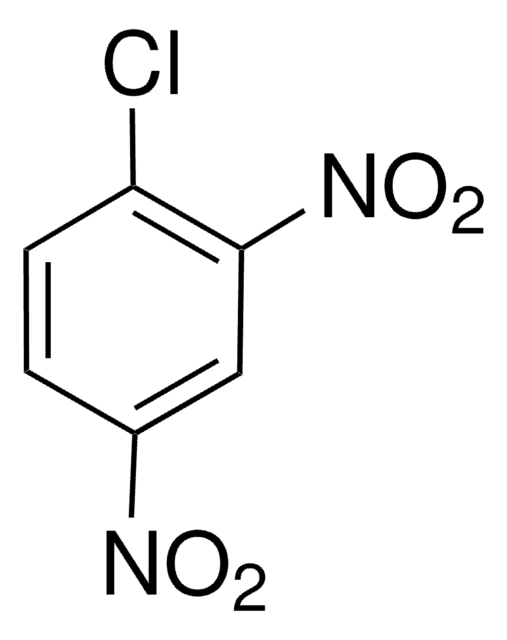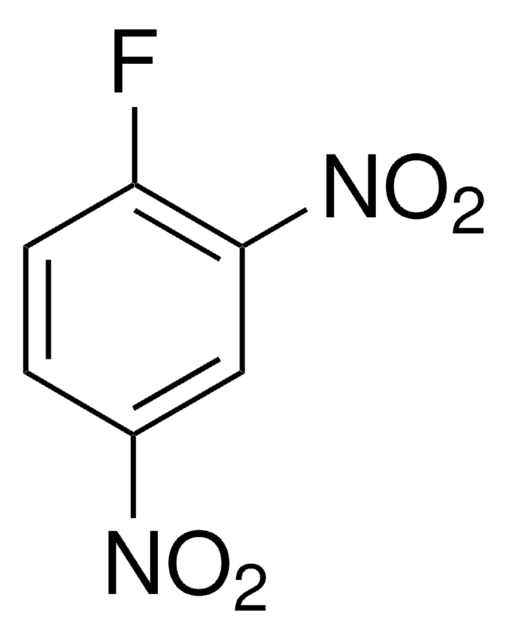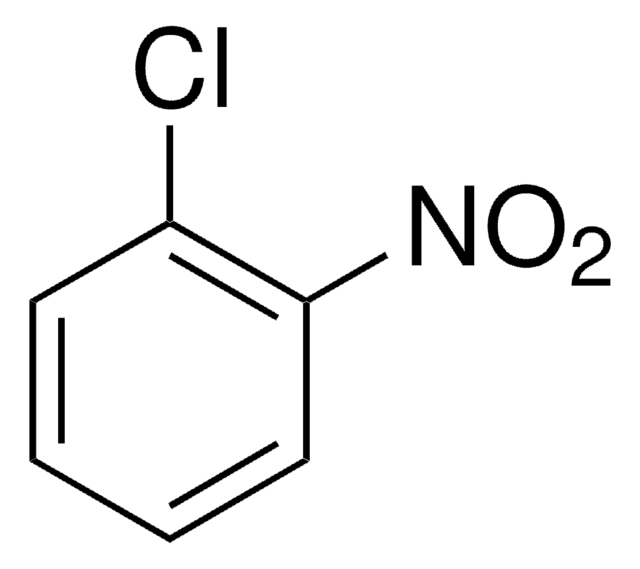138630
1-Chloro-2,4-dinitrobenzene
97%
Synonym(s):
2,4-Dinitrochlorobenzene, CDNB, DNCB
About This Item
Recommended Products
Quality Level
Assay
97%
form
solid
expl. lim.
22 %
bp
315 °C (lit.)
mp
48-50 °C (lit.)
solubility
alcohol: soluble (hot)
alcohol: very slightly soluble (cold)
benzene: soluble
carbon disulfide: soluble
diethyl ether: soluble
water: insoluble
functional group
chloro
nitro
SMILES string
[O-][N+](=O)c1ccc(Cl)c(c1)[N+]([O-])=O
InChI
1S/C6H3ClN2O4/c7-5-2-1-4(8(10)11)3-6(5)9(12)13/h1-3H
InChI key
VYZAHLCBVHPDDF-UHFFFAOYSA-N
Looking for similar products? Visit Product Comparison Guide
Related Categories
Application
Biochem/physiol Actions
Preparation Note
Signal Word
Danger
Hazard Statements
Precautionary Statements
Hazard Classifications
Acute Tox. 2 Dermal - Acute Tox. 4 Oral - Aquatic Acute 1 - Aquatic Chronic 1 - Eye Dam. 1 - Skin Irrit. 2 - Skin Sens. 1
Storage Class Code
6.1A - Combustible acute toxic Cat. 1 and 2 / very toxic hazardous materials
WGK
WGK 2
Flash Point(F)
381.2 °F - closed cup
Flash Point(C)
194 °C - closed cup
Personal Protective Equipment
Choose from one of the most recent versions:
Already Own This Product?
Find documentation for the products that you have recently purchased in the Document Library.
Customers Also Viewed
Our team of scientists has experience in all areas of research including Life Science, Material Science, Chemical Synthesis, Chromatography, Analytical and many others.
Contact Technical Service












